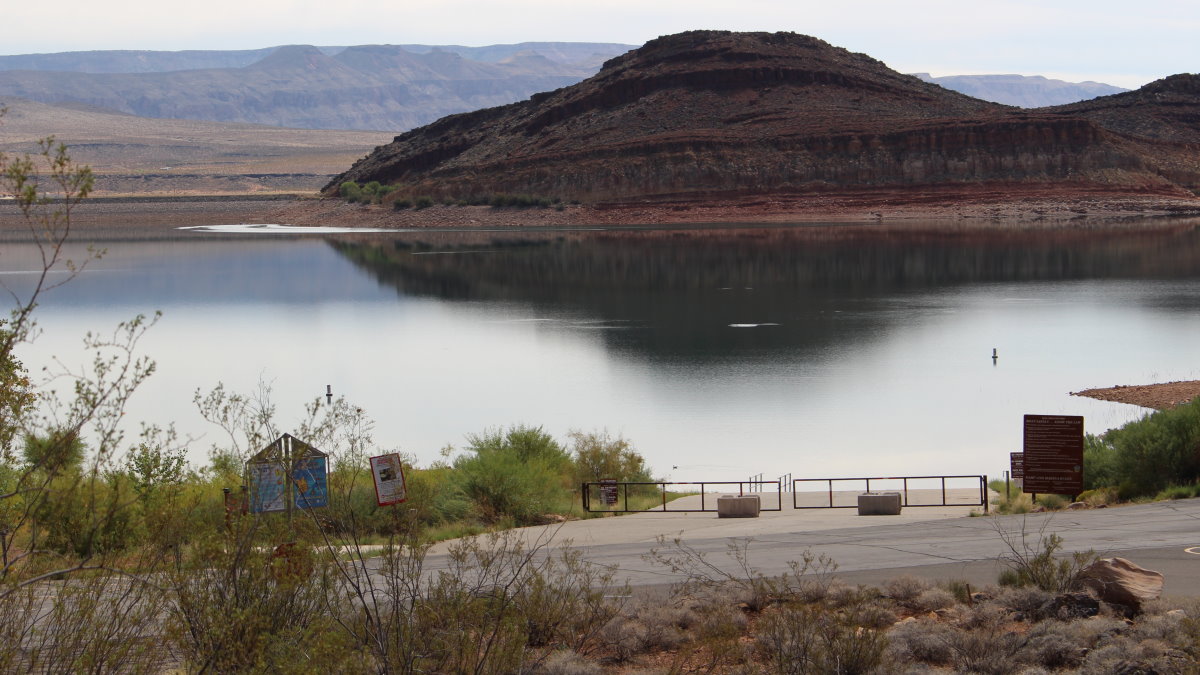
ST. GEORGE – Snowpack levels in Southern Utah are “below abysmal” for this time of year, according to national water officials.
“This is one of the worst water years I’ve seen in my lifetime,” said Ron Thompson, general manager of the Washington County Water Conservancy District. “We can drive our entire watershed right now and kick up dust – that’s unprecedented for this time of year.”
According to a January report from the Natural Resources Conservation Service, the snowpack in southwest Utah is at 8 percent of normal, with seasonal precipitation for October through December at 14 percent of average.

The county’s best months for snow have typically been February and March, but future weather predictions indicate the region will remain dry.
The dry weather this time of year is the complete opposite from what is was a year ago. Storms at the start of 2017 left mountaintops with snowpacks between 200 and 400 percent above average.
Read more: Water officials happy, yet watchful of above average snowpack
The last time southwest Utah’s snowpack was so low was 1977, according to the NRCS report.
“Any duplication of that debacle would be good to avoid,” said Randy Julander, snow survey supervisor for the NRCS. “That said, the train wreck is on its way – statistically, if you are less than 75 percent of normal on Jan. 1, there is only about a 20 percent chance of getting back to average by April 1, and the condition prevailing in Southern Utah isn’t even remotely close to 75 percent right now.”
Reservoirs to the rescue
The county will likely be living off reservoir water storage this year, Julander said.
Sand Hollow and Quail Creek reservoirs are 93 percent and 67 percent full, respectively.
“Imagine our situation if we didn’t have these reservoirs,” Thompson said. “… These reservoirs will carry us through this dry year.”

When Quail Creek, the first of the county’s reservoirs, was proposed in the early 1980s, some county residents at the time said the project was unnecessary and too costly. Construction of the project was over $20 million, which 90 percent of county residents voted to bond for despite objecting voices.
Read more: Quail Creek reservoir credited with supporting 30 years of growth
“I’m grateful that we, as a community, knew better,” Thompson said. “…We’d be in dire circumstances if we listened to the naysayers.”
While water shortages aren’t expected due to the reservoir storage, water district officials encourage water users to be efficient in their water use. They are also asked to turn off outdoor irrigation during winter and water sparingly this spring.
“Every drop we save counts,” Thompson said.
While municipalities like St. George and Washington City typically impose outdoor watering restrictions on residents during summer months, it remains to be seen if additional measures are put in place should the dry winter continue.
Email: [email protected]
Twitter: @MoriKessler
Copyright St. George News, SaintGeorgeUtah.com LLC, 2018, all rights reserved.
Oh me, oh my! We must have a $3 billion(?) Lake Powell pipeline! Here take my money while I go water the yard.
This would seem to indicate the need for the Lake Powell pipe line. I just wonder if we have the legal right to the water there. And if there will be enough water if we do.
Maybe its time to tell a few developments around here to shut off their water features. Almost every home in Entrada and a few other areas. Have an artificial stream and waterfall in the backyard. Dont tell me it doesn’t use that much water when “every drop counts”
Good thing water manager Ron Thompson has over 100,000 acre feet stored under Sand Hollow Reservoir to serve as protection for drought. That’s not to say that citizens should not conserve water. It just means that we have water – but not to waste. Makes me wonder, however, why the City of St. George even under such dry conditions insists on watering parks during this time of the year when lawns are dormant and don’t need watering. Don’t Ron Thompson and Mayor Pike talk, or does the mayor just not care? Also, the Colorado River is forecast to flow at 54% of its average volume during the key runoff season in 2018 (April to July). So, Ron Thompson and others should not look to the CR as their savior.
Jack up the prices for water. The only way people/businesses are going to conserve is if it hits them in the wallet.